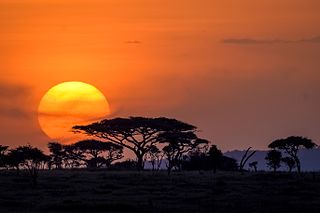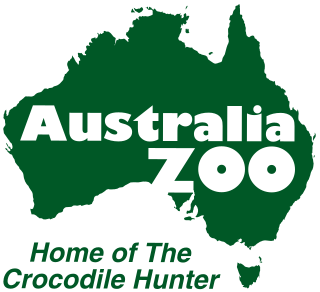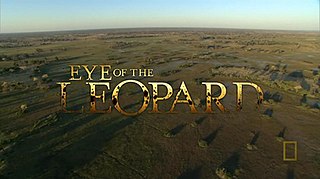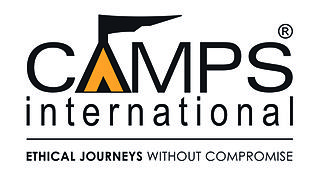
The Serengeti ecosystem is a geographical region in Africa, spanning the Mara and Arusha Regions of Tanzania. The protected area within the region includes approximately 30,000 km2 (12,000 sq mi) of land, including the Serengeti National Park and several game reserves. The Serengeti hosts the world's most massive land animal migration, which helps secure it as one of the Seven Natural Wonders of Africa.

The San Diego Zoo Safari Park is a zoo in the San Pasqual Valley area of San Diego, California, near Escondido. The park houses more than 3,000 animals representing over 300 species. It also includes a botanical garden with more than one million plants representing over 3,700 species. The park houses a large array of wild and endangered animals from every continent, except Antarctica. Located in a semi-arid climate, the area is noted for its year-round feeling of an African environment.

Ngorongoro Conservation Area is a protected area and a UNESCO World Heritage Site located in Ngorongoro District, 180 km (110 mi) west of Arusha City in Arusha Region, within the Crater Highlands geological area of northeastern Tanzania. The area is named after Ngorongoro Crater, a large volcanic caldera within the area. The Ngorongoro Conservation Area Authority administers the conservation area, an arm of the Tanzanian government, and its boundaries follow the boundary of the Ngorongoro District in Arusha Region. The western portion of the park abuts the Serengeti National Park, and the area comprising the two parks and Kenya's Maasai Mara game reserve is home to Great Migration, a massive annual migration of millions of wildebeest, zebras, gazelles, and other animals. The conservation area also contains Olduvai Gorge, one of the most important paleoanthropological sites in the world.

Australia Zoo is a 700-acre (280 ha) zoo in the Australian state of Queensland on the Sunshine Coast near Beerwah/Glass House Mountains. It is a member of the Zoo and Aquarium Association (ZAA), and is owned by Terri Irwin, the widow of Steve Irwin, whose wildlife documentary series The Crocodile Hunter and his family's new show Crikey! It's the Irwins made the zoo a popular tourist attraction.

Trophy hunting is a form of hunting for sport in which parts of the hunted wild animals are kept and displayed as trophies. The animal being targeted, known as the "game", is typically a mature male specimen from a popular species of collectable interests, usually of large sizes, holding impressive horns, antlers, furs, or manes. Most trophies consist of only select parts of the animal, which are prepared for display by a taxidermist. The parts most commonly kept vary by species but often include the head, hide, tusks, horns, or antlers.

South Luangwa National Park is in eastern Zambia, the southernmost of three national parks in the valley of the Luangwa River. It is a world-renowned wildlife haven which is known to locals simply as "the South Park." Concentrations of game along the meandering Luangwa River and its lagoons are amongst the most intense in Africa. The river teems with hippo and crocodile and provides a lifeline for one of the greatest diversities of habitat and wildlife, supporting more than 60 species of mammals and over 400 species of birds. It marks the end of the Great Rift Valley.

Wildlife tourism is an element of many nations' travel industry centered around observation and interaction with local animal and plant life in their natural habitats. While it can include eco- and animal-friendly tourism, safari hunting and similar high-intervention activities also fall under the umbrella of wildlife tourism. Wildlife tourism, in its simplest sense, is interacting with wild animals in their natural habitat, either actively or passively. Wildlife tourism is an important part of the tourism industries in many countries including many African and South American countries, Australia, India, Canada, Indonesia, Bangladesh, Malaysia, Sri Lanka and Maldives among many. It has experienced a dramatic and rapid growth in recent years worldwide and many elements are closely aligned to eco-tourism and sustainable tourism.

Eye of the Leopard is a 2006 National Geographic documentary directed by Dereck and Beverly Joubert. Set in the Mombo region of the Okavango Delta, Botswana, the film explores the life of a female leopard, Legadema, as she matures from a cub to an adult. Jeremy Irons, voice actor of Scar from Disney's 1994 animation The Lion King, narrates the film. It premiered in the US on the National Geographic Channel on October 8, 2006, and has won many awards including the BBC wildscreen Panda award for Best Sound Wild Screen and an Emmy. Since the success of the film, a book and an app of the same title have been released.
Battle at Kruger is an eight-minute amateur wildlife video that depicts a confrontation between a herd of Cape buffalo, a small group of young lions from a pride, and two crocodiles. The video was shot in September 2004 at the Transport Dam watering hole in Kruger National Park, South Africa, during a safari guided by Frank Watts. It was filmed by videographer David Budzinski and photographer Jason Schlosberg.

Botswana's principal tourist attractions are its game reserves, with hunting and photographic safaris available. Other attractions include the Okavango Delta region, which during the rainy season is a maze of waterways, islands, and lakes. The tourism industry also helped to diversify Botswana's economy from traditional sources such as diamonds and beef and created 23,000 jobs in 2005.

Tanzania is a country with many tourist attractions. Approximately 38 percent of Tanzania's land area is set aside in protected areas for conservation. There are 17 national parks, 29 game reserves, 40 controlled conservation areas and marine parks. Tanzania is also home to Mount Kilimanjaro, the highest point in Africa.

Majete Wildlife Reserve is a nature reserve in southwestern Malawi, established as a protected area in 1955. The reserve's animal populations were decimated during the late 1970s and 1980s due to poaching and other human activities. Majete has been managed by African Parks since 2003, when the nonprofit conservation organization entered into a public–private partnership with the Malawi Department of National Parks and Wildlife (DNPW). Since then, wildlife has been restored, the park has achieved big five game status, and tourism has increased.

Olare Motorogi Conservancy is a 35,000 acre community-based conservation area in Kenya, part of the Maasai Mara-Serengeti ecosystem and wildlife dispersal zone. It borders the Maasai Mara National Reserve. It was founded in 2006 as part of a new community conservancy concept.

Taman Safari Bali , or Taman Safari Indonesia III is a branch of Taman Safari located in Gianyar, Bali. It is managed by the Taman Safari Group which also manages Taman Safari Indonesia 1 in Cisarua, Bogor, West Java and Taman Safari Indonesia 2 in Prigen, East Java. All three Safari Parks including Taman Safari Bali are a conservation organization and a member of the Association of Indonesian Zoos.
Timothy “Tim” T. Kelly is an American media executive, film producer, and conservationist. He is recognized for his role in moving the National Geographic Society from a primarily print-based organization to a multimedia global force in television and digital media. Kelly engineered the launch of the National Geographic Channel in 1997, and was named President of National Geographic in 2011. He also served as President and CEO of the National Geographic Global Media group and President and CEO of National Geographic Ventures. Kelly announced he would be leaving National Geographic in September 2012.

Keith Eric Joubert was a South African artist and conservationist, and elder brother of wildlife filmmaker and conservationist Dereck Joubert.

Camps International Ltd is an international volunteer travel operator headquartered in Ringwood, Hampshire UK, Dubai, UAE and Australia. Camps International build permanent volunteer accommodation camps within Kenya, Tanzania, Uganda, Borneo, Cambodia, Ecuador and Peru. Its products include adventure expeditions, educational school expeditions for UK, UAE and Australian school groups.

Green hunting is the practice of tracking and shooting game animals with non-lethal tranquilizer guns or bows and subsequently releasing the captured animals alive. Green hunting would typically be performed when tranquilization of the animal is necessary for veterinary, monitoring or species translocation purposes.
Dereck Joubert is a South African-born filmmaker, author, conservationist and National Geographic explorer-in-residence based in Botswana. He is also the brother of South African artist and conservationist Keith Joubert.
Beverly Joubert is a South African-born wildlife photographer, filmmaker, conservationist and National Geographic explorer-in-residence.
















